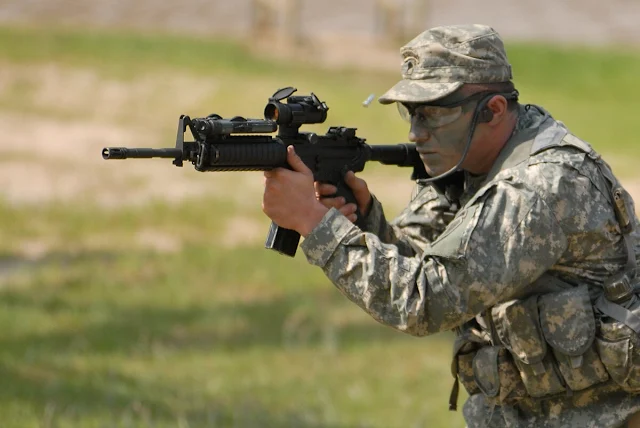The 75th Ranger Regiment is one of the most elite special operations forces in the U.S. Army, known for its rapid deployment capabilities and unmatched combat effectiveness. These warriors are trained to execute high-risk direct action missions, including airborne assaults, airfield seizures, and the elimination of high-value targets that threaten national security.
The regiment is divided into four battalions:
1st Battalion – Hunter Army Airfield, Georgia
2nd Battalion – Joint Base Lewis-McChord, Washington
3rd Battalion – Fort Benning, Georgia
Regimental Special Troops Battalion – Fort Benning, Georgia
 |
| https://commons.wikimedia.org/wiki/File:Operation_in_Muhammad_Aghah_district_Image_11_of_16.jpg |
The Ranger Ethos: The Big Five
The backbone of the Ranger Regiment’s philosophy is known as the "Big Five." These five core skills define what it means to be a Ranger:
Marksmanship
Physical Training
Medical Training
Small Unit Tactics
Mobility
Every Ranger is expected to master these skills, ensuring they can operate effectively in high-stakes environments. Their training isn’t just physical—it’s a rigorous test of mental resilience, decision-making under pressure, and the ability to adapt in ever-changing combat situations.
 |
| https://commons.wikimedia.org/wiki/File:Rangers_in_Action_25-African_Land_Forces_Summit-US_Army_Africa-13_MAY_2010.jpg |
The Tan Beret: A Symbol of Excellence
One of the most recognizable symbols of the 75th Ranger Regiment is the Tan Beret. This headgear represents the history and traditions of the original American Rangers and serves as a mark of honor, discipline, and relentless dedication.
 |
| https://commons.wikimedia.org/wiki/File:The_75th_Ranger_Regiment_competes_in_2015_Best_Ranger_150412-A-KQ461-216.jpg |
The Path to Becoming a Ranger
Not just anyone can join the ranks of this elite unit. The selection process is intense, designed to push candidates to their absolute limits.
RASP (Ranger Assessment and Selection Program):
RASP 1 – An 8-week selection process for enlisted soldiers and non-commissioned officers (NCOs).
RASP 2 – A 3-week selection course for officers and senior NCOs.
Candidates endure grueling physical and tactical training, leadership evaluations, and mental resilience tests. Those who succeed earn the right to wear the Tan Beret and join one of the most formidable fighting forces in the world.
.jpg) |
| https://commons.wikimedia.org/wiki/File:75th_Ranger_Regiment_Pointe_du_Hoc_(5435337).jpg |
Physical Fitness Requirements
To be a Ranger, you must meet exceptionally high fitness standards. Here’s a breakdown of the minimum and elite-level benchmarks for selection:
| Test | Minimum Standard | Elite Standard |
|---|---|---|
| Push-ups (2 min) | 49 | 75+ |
| Sit-ups (2 min) | 59 | 80+ |
| Pull-ups | 6 | 12+ |
| 5-mile run | Under 40 min | Under 35 min |
| 12-mile ruck march (35lb ruck + rifle) | Under 3 hrs 30 min | Under 2 hrs 45 min |
| Water survival test | 15m swim in full gear | 25m+ |
Beyond these tests, candidates undergo brutal tactical drills, extreme endurance events, and leadership assessments to ensure only the best make the cut.
 |
| https://commons.wikimedia.org/wiki/File:Rangers_at_D-Day_Commemoration.jpg |
Final Thoughts
The Rangers are always mission-ready, prepared to deploy anywhere in the world within hours. Their dedication, discipline, and unparalleled combat prowess set them apart as one of the most elite fighting forces in modern military history.
For more information on the 75th Ranger Regiment and their selection process, check out the official U.S. Army website.
Do you have what it takes to be a Ranger?
Comments
Post a Comment